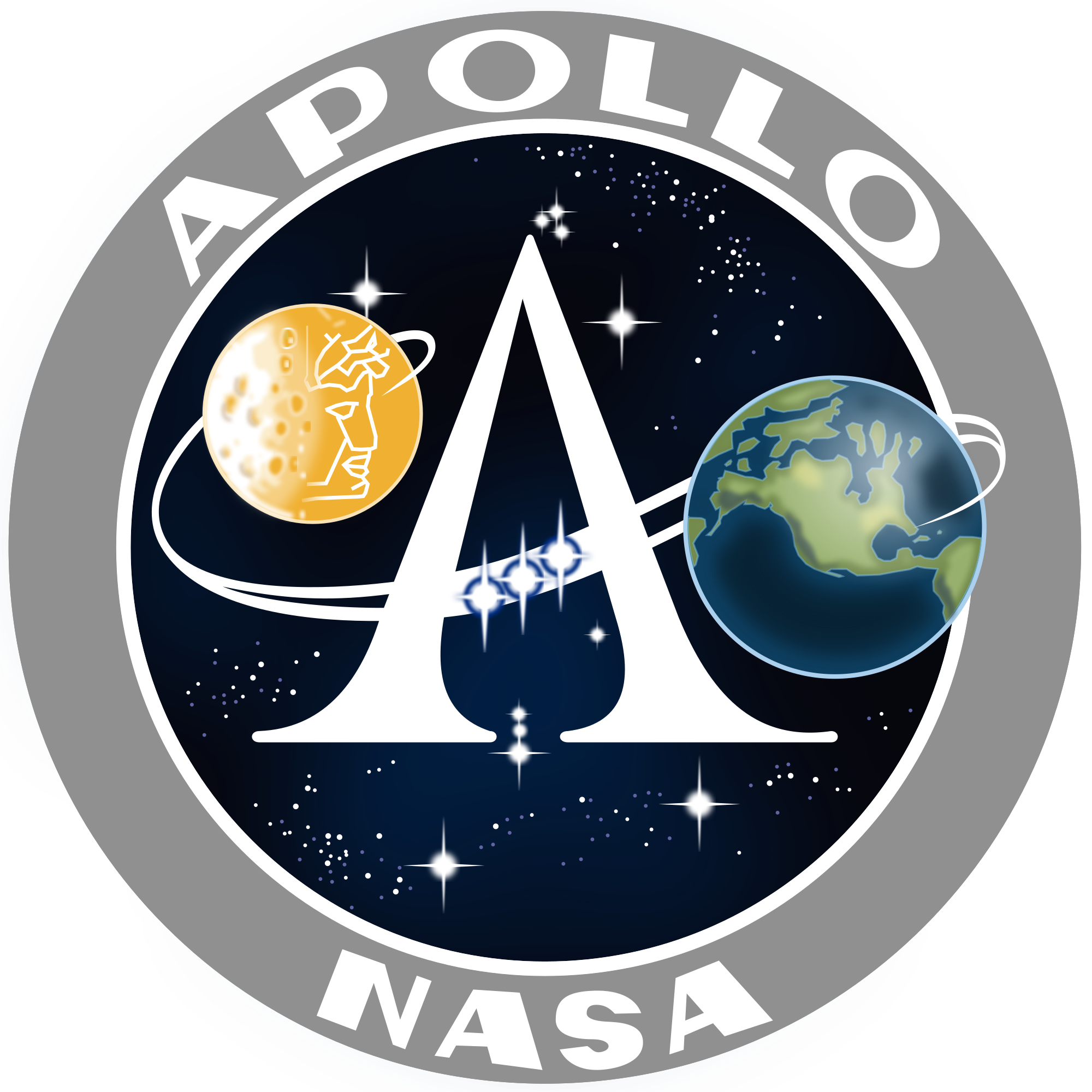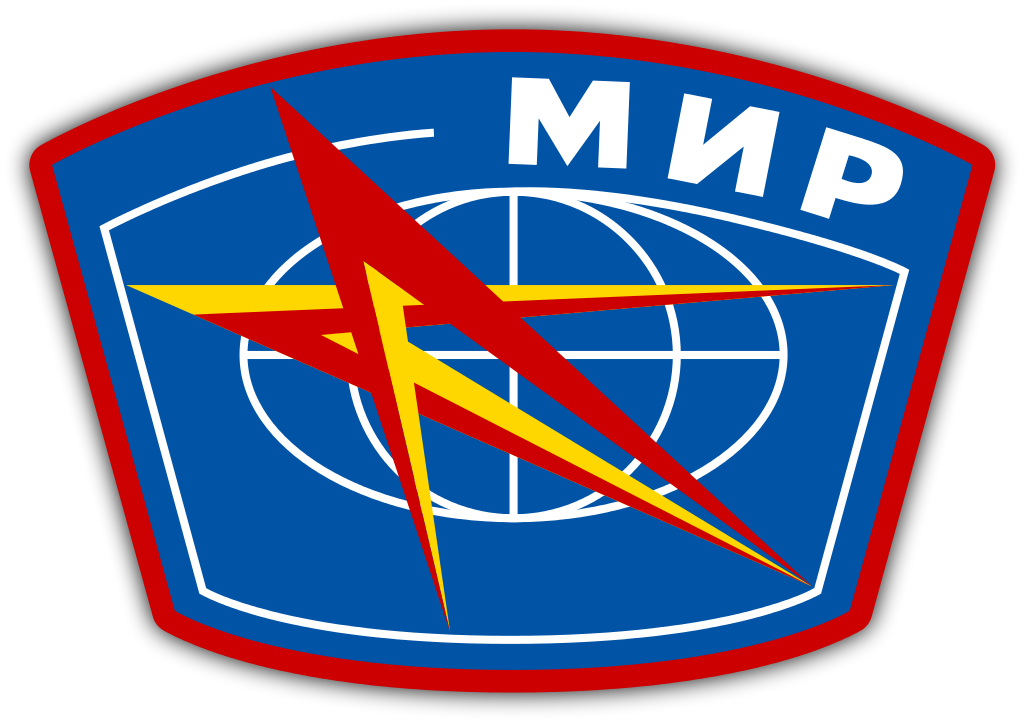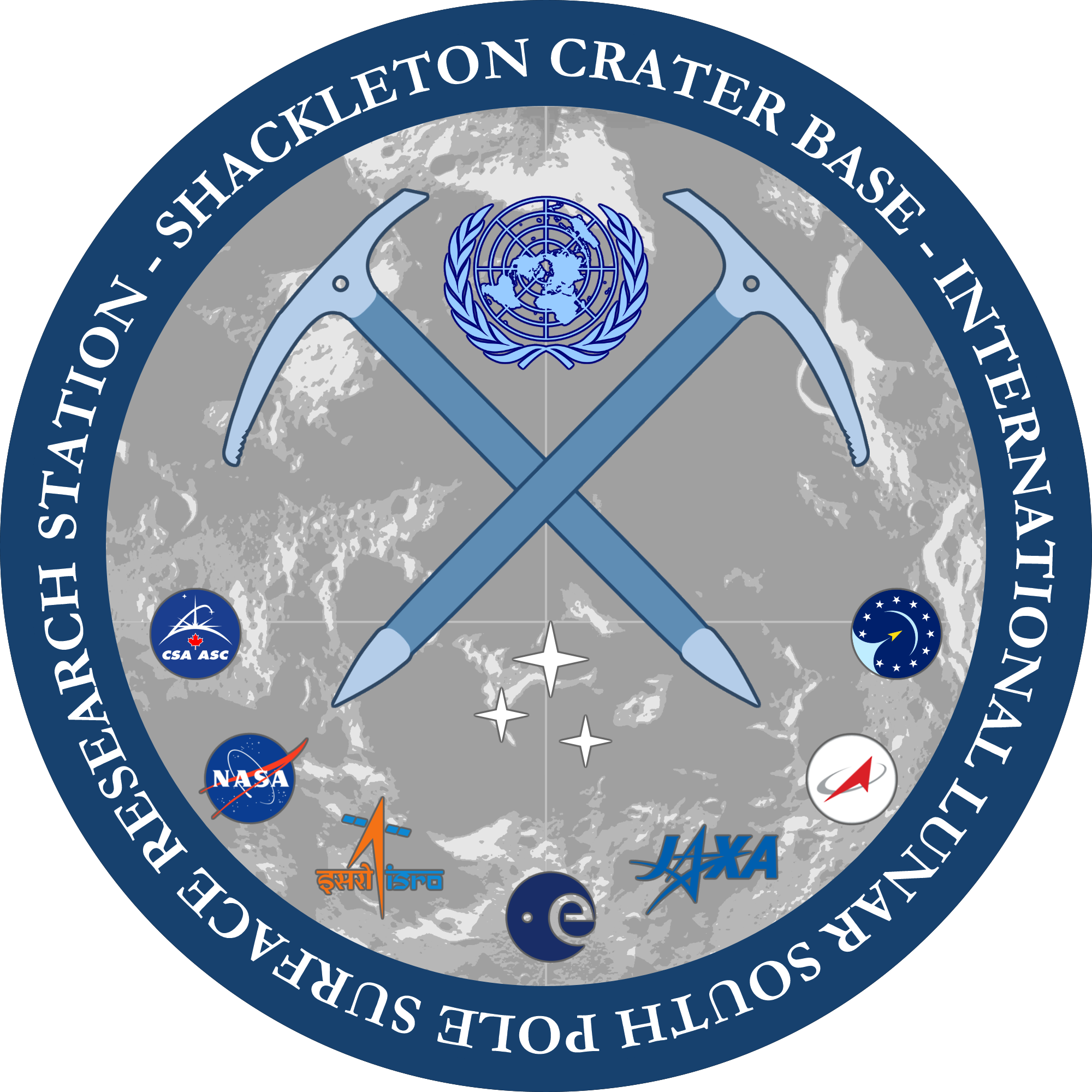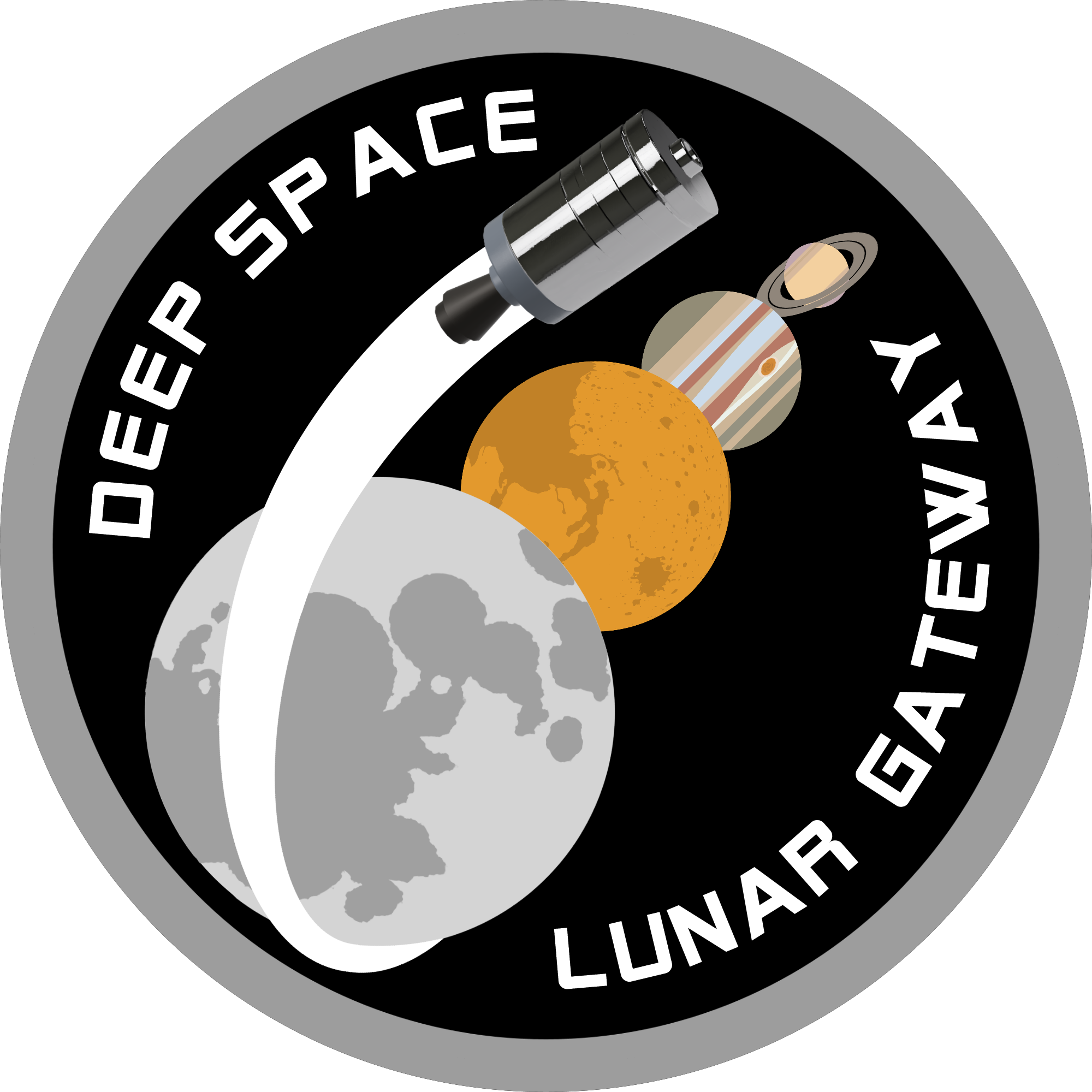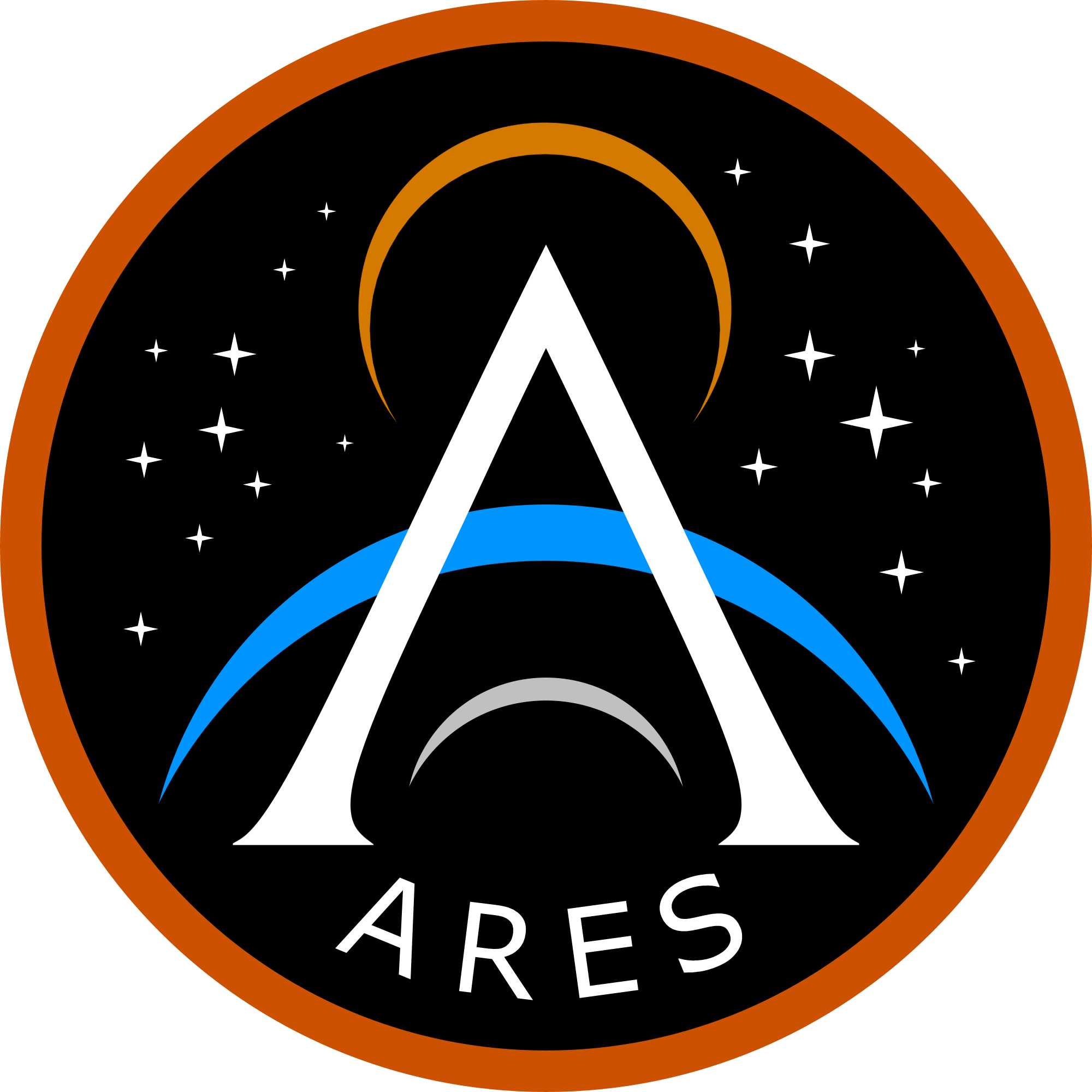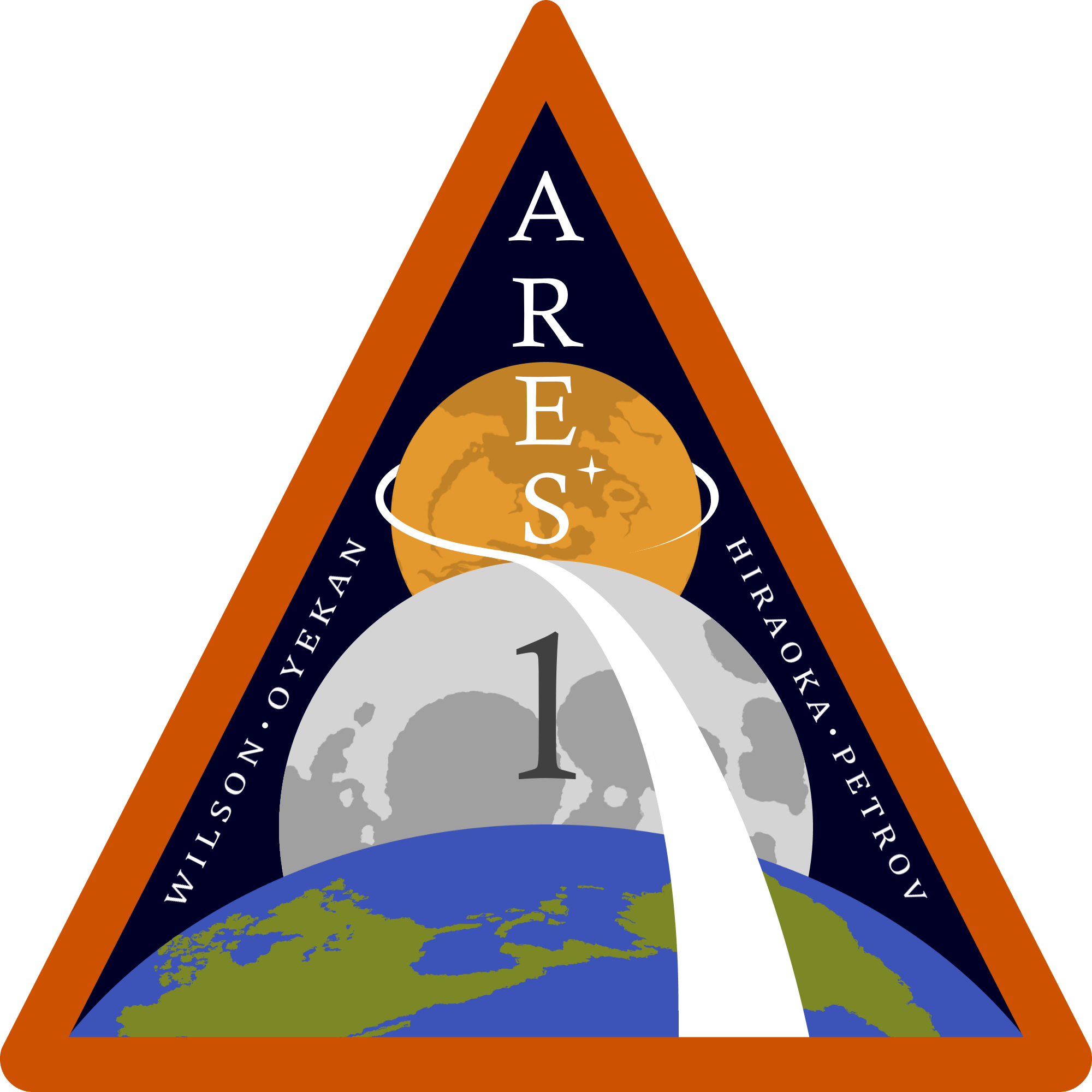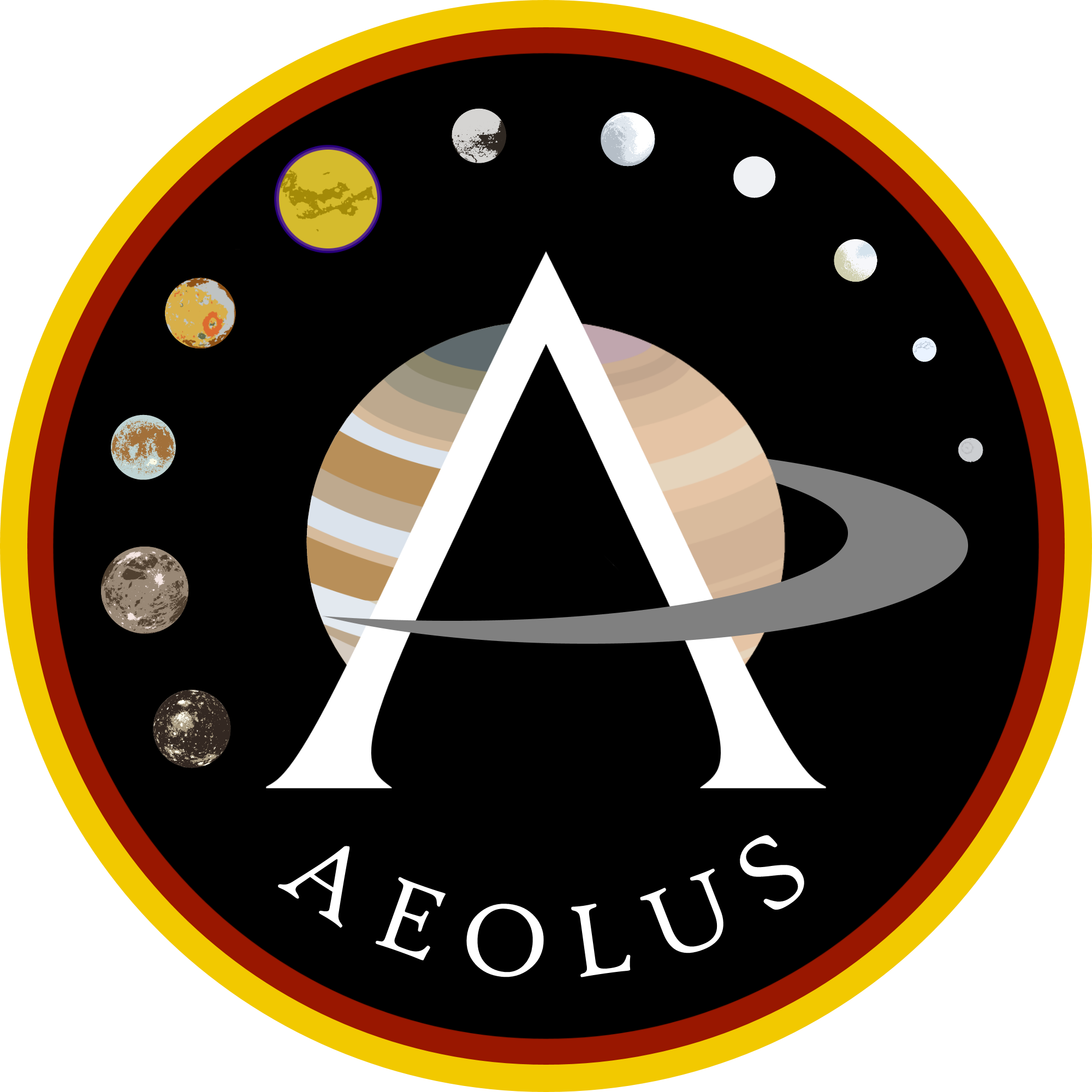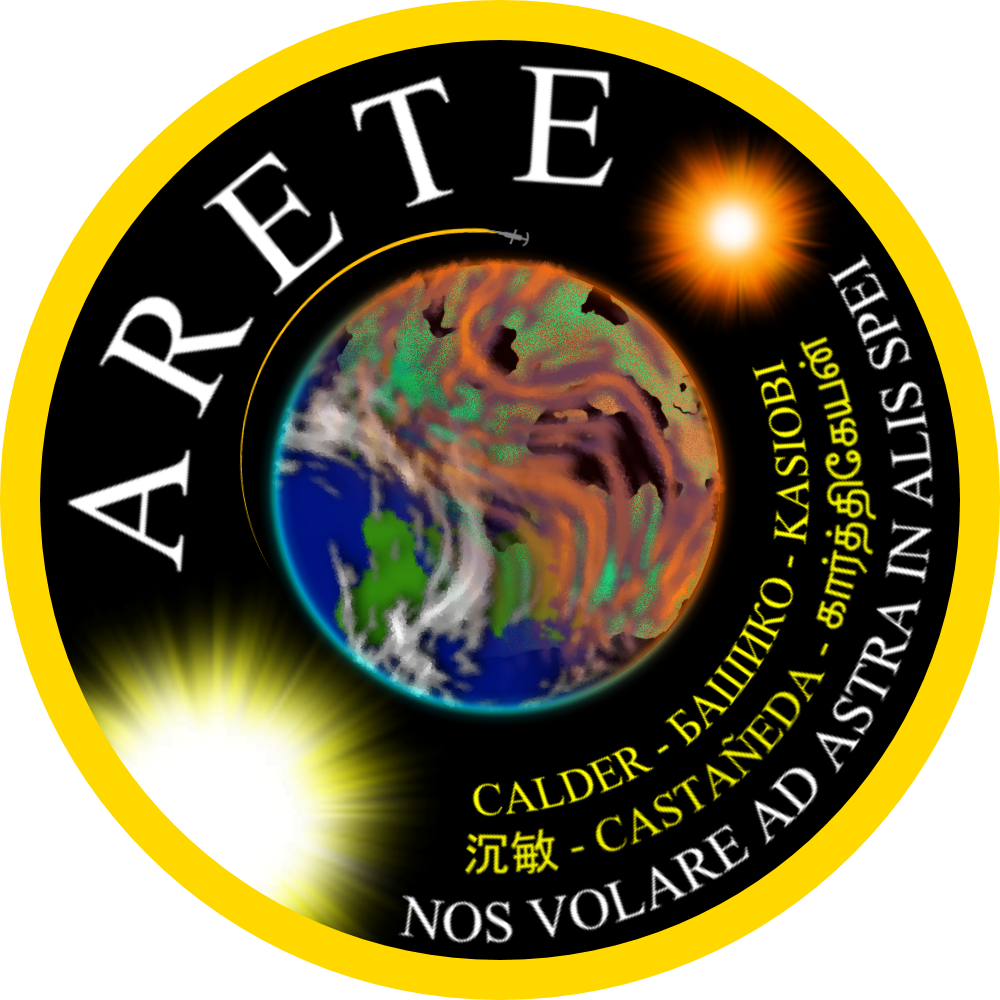The launch of the satellite Sputnik 1 into low-Earth orbit by the Soviet Union heralded the dawn of a new age: humans were destined to wander the stars just as their ancestors wandered the Earth.
The winners of the 2024 Worldbuilding Awards have been announced, and Alone Together won the category of Best Article!!! I am so immensely honored to be chosen by the denizens of World Anvil as one of the best worldbuilders on the site! Congratulations to my fellow winners and nominees!!!

-
Oct. 4 1957 CE
Sputnik 1
Scientific achievement -
Apr. 12 1961 CE
Vostok 1
Discovery, ExplorationIn April of 1961, cosmonaut Yuri Gagarin became the first human to reach Earth's orbit on his Vostok 1 flight, ushering in a fantastic new era of human achievement and paving the way for the human race's expansion throughout known space.
-
May 5 1961 CE
Mercury-Redstone 3
Discovery, ExplorationAlan Shepard is the second human to reach orbit, aboard the Mercury-Redstone capsule Freedom 7.
-
1961 - 1974 CE
Apollo Program
Discovery, ExplorationThe Apollo program was the third human spaceflight program operated by the United States' National Aeronautics and Space Administration (NASA), which succeeded in its milestone goal of landing humans on Luna. The Apollo program spanned 13 years, from 1961 to 1974 CE, with the first crewed flight in 1968. The program had one major disaster which claimed three lives: Apollo 1 suffered a fatal cabin fire during a prelaunch test. Nine lunar surface missions were planned, though because of another near-catastrophe (nonfatal) only eight lunar landings were achieved.
Location
Luna -
Jul. 16 - Jul. 24 1969 CE
Apollo 11 Lunar Mission
ExpeditionOn July 21, 1969, as millions of people watched remotely on the surface of Earth, two courageous men of the Apollo 11 mission became the first humans to set foot on a world other than their own: their planet's only moon, Luna. Their achievement, and the achievements of the other Apollo program astronauts, continue to inspire generations of humans to push ever forward into the frontier of space.
-
Apr. 19 1971 - Oct. 11 1971 CE
Salyut 1
Technological achievementIn April of 1971, the Soviet Union launched Earth's first orbital space station, a small module dubbed Salyut 1. The station was deorbited in October of the same year. It hosted one crew, those of Soyuz 11, after the dangerous failed docking of Soyuz 10 resulted in stricter safety procedures implemented in Soyuz operations. Tragically, the crew of Soyuz 11 lost their lives during reentry due to a valve failure. Georgy Dobrovolsky, Vladislav Volkov, and Viktor Patsayev were the first humans to die in space, though fortunately they remained the only humans to do so until the Tycho Station solar flare incident of 2036.
-
1972 - 2011 CE
Shuttle Program
Discovery, ExplorationNASA's Space Shuttle program was the first implementation of reusable orbital spacecraft, and the first non-experimental use of a spaceplane design in orbital-class missions. The space shuttle orbiters, of which there were six, were highly versatile craft utilized in a variety of mission types: from satellite launch and maintenance to the transport of astronauts to and from the International Space Station. Out of 135 missions, only one failed: STS-107 (Columbia disaster, 2003.) Frequently praised even to this day as some of the most elegant and ingenious machines humanity has ever sent to space, the shuttle orbiters' success was a milestone in the development of spaceplane design, and influenced the development of starship companion shuttles in later centuries.
-
1977 - 2025 CE
Voyager Program
Discovery, ExplorationOne of the most expansive space exploration projects conducted by humans during the 20th century CE, the 1977 Voyager program employed two highly versatile probes -Voyager 1 and Voyager 2- on diverging missions to visit all the known outer planets of the Sol system on carefully-planned flyby routes. However, the Voyager vessels remained operational for much longer than expected, and sent back readings from interstellar space after passing the termination shock in the early 21st century up until their loss of function in 2025. Because of the incredible longevity and speed of the Voyager probes, Voyager 1 was confirmed as the first human-made object to exit their home solar system in 2012, followed by its sister in 2018.
Once space travel was commonplace and efficient enough for commercial use, a small debate arose regarding whether or not to retrieve the Voyager probes. However, it was decided that they should remain on their courses as a testament to human achievement.
-
Feb. 20 1986 - Mar. 23 2001 CE
Mir Space Station
Technological achievementThe USSR's Mir space station was the first continuously-inhabited space station built and operated by humans. It orbited Earth for 15 years until orbital decay caused it to crash as planned into the south Pacific Ocean in March of 2001.
-
1996 - 2008 CE
Artemis Program
Discovery, ExplorationThe Artemis program was the second lunar exploration program operated by the National Aeronautics and Space Administration (NASA), begun as a NASA-exclusive operation in 1996 but was expanded into the International Lunar Exploration (Artemis-ILE) program in 2001. The program spanned 12 years in total, from 1996 to 2008, with the first crewed flight in early 2004. The program completed 12 missions, 11 of these crewed and all successful. The program was the final step toward establishing a permanent surface base on Luna, by building the International Lunar Research Station in lunar orbit to provide a reliable gateway to lunar operations.
Location
Luna -
Nov. 20 1998 CE - Nov. 24 2052 CE
Initial construction completed Aug. 6 2010
International Space Station
Technological achievementThe International Space Station was humankind's first collaboratively-built modular space station, beginning assembly in 1998 and remaining continuously occupied by humans from November of 2000 to its decommissioning in 2052. Having been succeeded as the primary point of human access to space in low-Earth orbit by Earth Orbital Spaceport, the ISS was gently towed to its present resting orbit around Earth-Moon L4, where it remains as a historical monument like its sibling, the International Lunar Research Station.
Location
Earth -
1999 - 2012 CE
Project Sagitta
Technological achievementProject Sagitta was an engineering and design project run by NASA from 1999 to 2012. The goal of the project, in which it was ultimately successful, was to design an efficient and powerful fusion-ion engine that would meet the specifications of the Ares Program. The prototype Sagitta engine was tested in 2012 and, following numerous successful orbital tests, was included in the design of the UNMS Athena.
-
Mar. 26 2005 - Feb. 1 2064
Initial construction completed Sept. 25 2008 CE
International Lunar Research Station
Technological achievementIn 2005 CE, the core module of the International Lunar Research Station was delivered in Lunar orbit by the Artemis III mission as part of the Artemis-ILE program. Built cooperatively by NASA, ROSCOSMOS, ESA, CSA, ISRO, JAXA, and AECS, the ILRS was completed in 2008 CE and served as the base structure for the Deep Space Gateway. After nearly sixty years of service, the ILRS was decommissioned in February of 2064, having been succeeded by Lunaport as the primary lunar orbital station a few decades earlier. ILRS was gently retired to Earth-Moon L4, where it remains as a historical monument much like the ISS.
Location
International Lunar Research Station -
Jan. 5 2010 CE
Formation of the United Nations Aerospace Commission
FoundingOn January 5 of the year 2010, the United Nations of Humanity formed a pact that would shape the future of the human species. This agreement, the formation and funding of an international space agency, was one of the most monumental moments of humankind's cooperation with each other. The United Nations Aerospace Conmission became the torch of the human species, fueling humanity's instinctive cosmic curiosity and driving the expansion of humankind further and further into space.
-
Jan. 15 2010 CE
Shackleton Crater Lunar Surface Base
Discovery, ExplorationThe International Lunar South Pole Surface Research Station (ILSPSRS), usually just called Shackleton Base, was established in 2010 CE as part of the International Lunar Exploration Program founded by NASA and Roscosmos in the 1990s. Auspiciously, Shackleton Base was established just days after the formation of the United Nations Aerospace Coalition. Shackleton Base, with the crater's vast store of water ice, was instrumental not only in paving the way for future permanent lunar settlements, but also for the orbital refueling system within Earth-Lunar orbit that allowed for much greater human exploration of the solar system.
Location
Luna -
Feb. 19 2010 - Present
Construction completed Jun. 10 2015 CE
Deep Space Gateway
Technological achievementIn 2010, construction began on the Deep Space Gateway (DSG), a UNAC lunar station project that laid the foundations for exploration deeper into the solar system. After assuming responsibility for the continuation and maintenance of the International Lunar Research Station (ILRS) established almost a decade earlier, UNAC followed through with the ILE coalition's prior plans to expand the ILRS to provide support for in-space refueling of large interplanetary vessels. On February 19th of 2010, the first of the new assembly modules arrived and was added to the DSG, followed by a series of additions until the upgrade's completion in 2015.
Location
Deep Space Gateway -
2010 - 2028 CE
Ares Program
Discovery, ExplorationThe Ares program was a NASA-led crewed spaceflight project overseen by UNAC that succeeded in its milestone goal of landing humans on the surface of Mars. The Ares program spanned 18 years, from 2010 to 2028 CE, and five missions, each a duration of roughly 440 days with 30 of those spent on the Martian surface. All five missions were a success.
Location
Mars -
Jun. 27 2018 - Apr. 24 2019 CE
Ares 1 Mars Mission
ExpeditionOn October 3, 2018 CE, after 98 days in space, the Ares I mission crew touched down on the surface of the planet Mars. Commander Alyson Wilson was the first human to step on the red planet, followed by Akande Oyekan, Arseni Petrov, and Ayami Hiraoka. Remaining on the surface of the rust world for a month, the astronauts of the Ares I mission studied the composition of the red planet, tested the performance of new technologies, and determined which crops grew best in the harsh Martian environment. Thanks to the success of the Ares I mission, the Ares program was continued to the end of the fifth mission in 2028, after which they were supplanted by the regular expeditions to International Mars Orbital Research Station.
Location
Mars -
Jun. 3 2023 - Oct. 17 2034 CE
Europa Clipper Mission
Discovery, ScientificThe Europa Clipper was an unmanned interplanetary mission to Jupiter's moon Europa spearheaded by NASA, comprising of an autonomous orbiter and smaller lander. The Clipper was launched in June 2023 and arrived at the Jovian subsystem in October of 2029, making 75 orbital passes by the moon before correcting for a death plunge into the Jovian atmosphere. In early 2030, the probe flew through an active water plume and detected complex organic molecules (including amino acids) during spectroscopic analysis of vapor samples. In 2033, the probe also dropped its lander, the first human-made object to touch the moon's surface, which discovered further chemical evidence to support the existence of life in the Europan ocean: the first indication to humans of life beyond Earth.
-
Dec. 15 2023 - Oct. 30 2046 CE
Data return: 2049 - 2050 CE
Breakthrough Proxima Mission
Discovery, Exploration2023 CE marked the beginning of humanity's ventures outside their solar system. On December 15 of 2023, the first hundredfold of the Breakthrough Starshot microprobe fleet launched on an escape velocity vector out of the Sol system and towards Proxima Centauri. Racing through interstellar space at 20% the speed of light, the fleet performed a thorough fly-through of the Proxima Centauri system in 2045, with the data reaching Earth just over four years later. After passing through the system, the microprobes gradually ceased communications with Earth until the last signal was sent on October 30, 2046.
Location
Proxima Centauri -
Aug. 28 2029 CE - Present
Initial construction completed Apr. 16 2045 CE
International Mars Research Station
Technological achievementAs part of the extended Constellation program to enable extensive out-system exploration, the United Nations Aerospace Coalition planned a permanently-occupied station in low Mars orbit to follow up the Ares missions. In 2029, the core module of the International Mars Research Station arrived in Mars orbit. Additional modules were delivered by unmanned commercial spacecraft over the course of the early 2040s, and the IMRS received its first crew of 4 on April 16, 2045 to begin regular crew rotations.
Location
International Mars Research Station -
Apr. 30 2032 - Nov. 14 2041 CE
Ariadne Mission
Discovery, ScientificThe Europa Research Submarine (ERS) Ariadne, accompanied by its Thermal Hull Entry System for EUropa Submarine (THESEUS), was an autonomous mission to Jupiter's moon Europa as a follow-up to the Europa Clipper. Launched in 2032, the probe reached its destination in late 2036 and reached the inner ocean after two months of thermal boring. Its onboard cameras almost immediately recorded the presence of complex macroscopic life, causing an unprecedented paradigm shift for human civilization.
Location
Europa -
Oct. 30 2035 - Dec. 1 2036 CE
Operation Hearth
Scientific achievementOperation Hearth was an ambitious space exploration initiative conceived and operated by Minerva with the goal of establishing a human presence on the asteroid 4 Vesta, a large metallic asteroid in the Sol asteroid belt. Hearth was part of a much broader, longer-term vision: the creation of a complex network of human settlements in the Belt in order to utilize its resources. Launched in late 2035, the Hearth fleet arrived at Vesta at the end of the following year and began to set up the self-contained habitat later christened Hestia Base. With this successful and monumental achievement under their belt, the Interorbital Operations Division began to plan an even more formidable feat: transferring their asteroid mining program's base of operations from Vesta to the dwarf planet Ceres later in the century.
-
Mar. 23 2036 - Apr. 12 2068 CE
Initial excavation completed Aug. 7 2066 CEAaru Project
Construction beginning/endThe Aaru Project was one of humanity's first attempts at asteroid mining, of a sort. The project, funded by private donors and orchestrated by the start-up company Duat Orbital Enterprises, aimed to hollow out the Earth-crossing asteroid 99942 Apophis and render the interior a self-contained environment suitable for human habitation. The autonomous excavation apparatus was launched to the asteroid during its close translunar flyby in March of 2036, and quietly completed its duties over the next three decades, reshaping Apophis into a hollow ark of sorts. When the asteroid made its next close approach to Earth in 2068, an ark-ship called Duat Alpha was sent to fill the hollow object with air, water, and terragenid life.
Location
Apophis -
Aug. 6 2039 - Sept. 19 2133 CE
Initial construction completed Feb. 7 2048
Earth Orbital Spaceport
Technological achievementEarth Orbital Spaceport (EOS), constructed from 2039-2048, replaced the aging International Space Station as humanity's primary port of call for deep-space operations. Completed in 2048, EOS remained a fixture of low Earth orbit for well over 75 years, until its eventual replacement by the even larger (and far more permanent) Gaia Station in 2125. It was officially decommissioned in 2133, and like its predecessors was towed to rest in a stable Earth-Moon L4 orbit where it remains as a historical monument. Its acronym, EOS, was also the name of the Greek goddess of the dawn, and was elegantly symbolic of its place in history: the dawn of permanent human presence in space.
-
2040 - 2067 CE
Aeolus Program
Discovery, ExplorationThe Aeolus program was a UNAC crewed spaceflight project that succeeded in its milestone goals of sending humans to the Jupiter and Saturn subsystems and landing humans on the surfaces of all four Galilean moons as well as all of the major Saturnian moons. The Aeolus program's 27-year span was split into two major phases: the Jovian and Cronian phases, in addition to the many years of preparation.
Jovian Phase
The Jovian phase, centering on human visitation of Jupiter, spanned 8 years, from late 2049 to late 2057 CE. Four Jovian-phase missions were launched, each a duration of roughly 460 days with roughly 340 of those spent in the Jovian subsystem itself. All four missions were a success.Cronian Phase
The Cronian phase, centering on human visitation of Saturn, spanned 8 years, from 2059 to 2067. Though slightly delayed by refitting of the mission vessel UNIS Janus, the four Cronian-phase missions were launched without incident. Each mission to Saturn was slightly longer than their Jovian-phase counterparts, each a duration of roughly 494 days with roughly 262 of those spent in the Saturnian subsystem itself -more time spent in transit meant less time at the destination. All four missions were a success. -
Sept. 11 2048 - Sept. 29 2055 CE
Aeolus I Jupiter Mission
ExpeditionOn May 29, 2051, after just under three years on course through deep space, the eight-member crew of the Aeolus I mission reached Jovian orbit and began initial observations. Following roughly a day of Jupiter observation, the Janus entered orbit of Callisto and spent the next several days deploying the surface equipment. The crew disembarked on the landing craft and began their 336-day residency on the outermost Galilean moon. While in the Jovian subsystem, the Aeolus I crew performed thousands of experiments across dozens of scientific disciplines, from analysis of Callistoan ice cores to studying the behavior of Jupiter's radiation belts. The resounding success of Aeolus I ensured the continuation of the program at least until the end of Janus IV, after which the program was delayed slightly due to technological challenges.
Location
Jupiter -
Jan. 5 2050 CE
BIFROST Founded
FoundingOn the 40th anniversary of the United Nations Aerospace Coalition's foundation, the Boeing Interplanetary Ferry, Resupply, and Orbital Shuttle Transit, or BIFROST, was founded as a UNAC Commercial Partner Project to function as the resupply system connecting the International Mars Orbital Research Station (and later, New Thebes) with Earth. The BIFROST evolved over time to service the outer system as new outposts sprang up in the Jovian and Saturnian subsystems.
Location
Deep Space Gateway -
Mar. 18 2076 CE - Present
Initial construction completed Aug. 20 2078 CE
Opes Station
Technological achievementDue to the unprecedented duration of the humans' Janus IV mission to the Saturnian subsystem, it was clear that the Janus program's expeditions would need a large orbital base station to reside in and launch cronilunar excursions from. As a result, the UNAC commissioned Minerva, the builders of Juno, to construct an identical station for the even longer-lasting missions to Saturn. Construction began on the Orbital Platform for the Exploration of Saturn - Opes - in orbit of Vesta on March 18, 2076. It was completed two years later, and after two years of rigorous testing Opes was launched. The station arrived in Saturnian orbit on March 16, 2088; roughly nine months before the Janus IV crew arrived to claim it as their new temporary home.
After the Janus program's end, Opes was unstaffed until the UNAC arranged a schedule of regular round-trips with the BIFROST in the late 2100s.
-
Sept. 19 2078 CE - Present
SAMCO Project
Scientific achievementIn 2078, the first component of the Sagan Multi-spectral Cosmic Observatory -the largest and most powerful orbital telescope yet built by humans- was successfully placed in an orbit around Earth-Luna L5. This ambitious project continued construction for nearly three years, completed in early 2081. Immediately it turned its gigantic eye on nearby star systems, seeking to capture the first detailed direct image of an extrasolar planet.
It succeeded.
On November 9, 2081, SAMCO beamed home the first visible-spectrum photographs of a world bound to a star other than Sol. The subject of the image, though washed out and grainy, was clearly visible as the gas giant Juno, orbiting none other than Sol’s neighbor Alpha Centauri.Location
Alpha Centauri -
Dec. 10 2081 - Jul. 28 2082 CE
Operation Ebisu
Population Migration / TravelOperation Ebisu was, in essence, the "sequel" to Operation Hearth, being the seven-month-long transfer of Minerva's asteroid mining headquarters from the asteroid 4 Vesta to the dwarf planet Ceres, accompanied by the establishment of the settlement aptly dubbed Proserpina Base. During an exceedingly rare long-duration close pass of Vesta and Ceres, heavy equipment and habitat modules were launched from Hestia Base on Vesta to the surface of Ceres; this was an unprecedented length of continuous, complex interorbital travel in the Sol system not even matched by the much later Ishtar missions.
-
Feb. 1 2100 CE
Alexandria established
FoundingAfter over half a century of no human activity on the Martian surface, the Cadmus V mission established Alexandria in Da Vinci Crater: humanity’s first permanent residence on a planet other than Earth.
Location
Alexandria -
2102 CE
Ansible invented
Technological achievement -
Feb. 23 2120 - May 9 2121 CE
Ishtar I Mission
ExpeditionThe Ishtar I mission was a crewed expedition to Venusian orbit in the early 2120s that made use of an extremely rare and fortuitous orbital alignment of Apophis, Venus, and Earth. Launched from the asteroid Apophis, settled over half a century earlier by the Duat Project, the Ishtar I mission was the first interplanetary expedition launched from a body other than Earth or its moon. Built from the excess material left over from the asteroid's excavation in the 21st century, the UNSS Pandia carried her 10 crew members on a speedy week-long jaunt from Apophis to Venus during its long-duration close pass with Apophis in early 2120. The mission studied the boiling, caustic planet from orbit for a period of nine months before departing on a five-month cruise to Earth. A decade later, during Apophis' next translunar pass of Earth, the Pandia and her crew were returned to their original asteroid home alongside Duat Beta, ready to re-explore Venus in 2142's Ishtar II mission.
-
May 24 2127 - Aug. 19 2129 CE
Hephaestion Expediton
ExpeditionIn 2127 CE, Minerva launched a mining expedition to the asteroid 3 Juno from their Belt headquarters on Ceres. The expedition took over two years to reach its destination, but once the Hephaestion crew arrived, they began to construct Juno's first human station. This settlement is now known as the city of Heraclione.
-
Jul. 28 2139 - Mar. 8 2247 CE
Copernicus Mission
Discovery, ExplorationAfter SHEO's mapping of the Proxima Centauri planetary system and the Breakthrough Proxima mission's initial survey, the probe Copernicus was launched in mid-2139 to explore it in more depth. Copernicus, with its new Xiuhcoatl fusion drive, reached a brisk 0.3c cruising velocity, arriving in the system just after New Year’s Day of 2054. The probe slowed to orbital velocity and parked around Prometheus, making detailed scans of the planet’s surface and taking high-resolution images to send back to Earth. A year later, after Copernicus’ onboard AI had determined a landing site, the surface probe was deployed. The results were stunning.
Location
Calypso -
2175 - 2202 CE
Ambassador Fleet Program
Discovery, ExplorationIn response to the success of the SHEO planet-hunter program, a fleet of fast-traveling probes was constructed with the objective of exploring the other star systems within ten lightyears of the solar system. Called the Ambassador fleet, they were powered by antimatter engines enabling them to achieve a maximum speed of 0.8c at 10Gs of acceleration, and contained the most advanced AI systems of the time. The six probes were:
- Isaac Newton, sent to Barnard's Star
- Leonardo da Vinci, sent to CN Leonis
- Galileo Galilei, sent to Lalande 21185
- Albert Einstein, sent to the Sirius binary system
- Max Planck, sent to the Gliese 65 binary system
- Marie Curie, sent to Ross 154
-
Oct. 3 2181 - Oct. 28 2205 CE
Arete Mission
ExpeditionThe Arete mission of 2181 - 2205 was a 24-year expedition to the moon Calypso in the Proxima Centauri system, and the first crewed interstellar voyage humanity undertook. Six humans aboard the UNSS Skyward Spirit dedicated two decades of their lives to the study of an alien world, and their courage and dedication paid off in unimaginable ways.
Location
Calypso -
Apr. 15 2191 - Sept. 20 2222 CE
Elpis Mission
Discovery, ExplorationJust prior to the Arete mission’s arrival back in the Sol system, SHEO spotted something that sent human society into chaos. On January 17th, 2191 –almost 60 years since the discovery of Vulcan– the observatory sent home an extremely washed-out image of an Earth-sized planet emerging from the far side of Alpha Centauri A. A probe, cobbled together from spare parts of the Ambassador fleet, was sent to the system at breakneck speed, arriving in orbit in March of 2098. Elpis was christened for the Greek spirit of hope, as it bore the high hopes of the human species for an extrasolar home at long last.
Fortuna delivered.
Elpis discovered another life-filled planet, not tidally locked like Vulcan but with a day/night cycle akin to that of Earth. Orange-yellow autotrophs thrived both on the scattered landmasses and in the vast oceans, accompanied by strange fauna that often blurred the definitions of animal and fungus. Elpis’ lander trio, Aristotle, Plato, and Socrates, provided copious data that would eventually be crucial to the success of the manned Caerus mission.
Location
Fortuna -
Dec. 4 2100 - May 9 2127 CE
Odyssey Mission
Discovery, ExplorationShortly after the results of Albert Einstein’s survey mission to the Sirius system returned to Earth in 2096, a new probe was launched to follow in Einstein’s relativistic exhaust trails. Dubbed the Odyssey, its 30-year mission was to study the Sirius and Procyon binary stars. After launch in 2200, the longest leg of its mission was the 12.7-year relativistic journey out to the Sirius system. Once there, it studied the Sirius binary stars and refueled on antimatter over a three year period. Upon completion of refueling, Odyssey began its 7.8-year trek to the Procyon system, where it spent the rest of its operational life studying those two stars. The data gathered by the Odyssey probe was crucial to understanding the behavior and life cycles of high-mass stars, and helped engineers to design the baseline structures of the Romulus and Remus city-stations. The Odyssey mission was the test bed for early experimental antimatter tech, equipped with an antimatter-catalyst fusion engine modeled after the Sagitta drives. Odyssey was also the proving ground for fully sapient artificial intelligence. For a mission with such a long range and duration, scientists created an adaptable self-aware digital program capable of learning and running the mission on its own, dubbed Heuristic Onboard Managing Electronic Researcher (or HOMER). HOMER was a marvelous success, although his inclusion in a craft with a one-way trajectory was a hotly debated ethical controversy. In the end, however, the Odyssey was recovered from its wide stasis orbit around Procyon and HOMER, after an upgrade, was integrated with Remus’ systems.
-
Jul. 9 2207 - Dec. 30 2231 CE
Aeneid I Mission
ExpeditionThe Aeneid mission of 2207 - 2231 was a 24-year expedition to the planets Fortuna and Concordia in the Alpha Centauri system, and the second crewed interstellar voyage humanity undertook. Six humans aboard the freshly refitted UNSS Skyward Spirit were sent in the wake of probe Elpis to study this mysterious yet promising alien world, and their work paved the way for the future settlement of Fortuna.
Location
Fortuna -
2220 - 2272 CE
First Contact with Ra'na
Diplomatic actionIn the early hours of November 28, 2220 CE, a small team of scientists operating the Drygalski Crater Radio Observatory on the spacebound face of Luna detected a faint, sustained radio signal radiating from the apparent position of Tau Ceti. It was soon discovered to be of intelligent origin -in fact, it was later determined to be one of the first long-range voice transmissions conducted on Ra'na, leaking out into space. After two months of deliberation, a message of greeting was broadcast to Tau Ceti, and the United Nations Aerospace Coalition set about to planning an autonomous mission to the system. The probe Henry Stanley, equipped with full artificial intelligence and a spare ansible, was launched on a course for the system in 2230: three years before humanity's radio calling card arrived at its destination. In 2244, a return message was received from the inhabitants of Tau Ceti, who called themselves skae. They, too, had decided to send an autonomous probe, but their technological capacity at the time produced a nuclear-pulse vessel more akin to Copernicus than Stanley. However, it was never launched. Just a year after this return greeting, Henry Stanley settled into orbit and deployed its landers, one of which was equipped with a simple ansible intended for the skae to reverse-engineer. After almost a three-decade electromagnetic dance across twelve lightyears, the two species were finally able to communicate in real-time from 2245 onward, working together to coordinate a crewed expedition that would become the Perseus I mission.
Location
Ra'na -
2222 - 2306 CE
Constellation II program
Discovery, ExplorationThe Constellation II program was an intensely productive period of human spaceflight, initiated by the construction and launch of the twin interstellar stations Romulus and Remus. In total, eleven stations were constructed and launched to various local star systems, although one (the UNSS Menaka) was destroyed in the first major space-based disaster since the loss of the Space Shuttle Challenger in 1986. Though the Constellation II program did bring the first human deaths in space, it was instrumental in expanding humanity's presence in the local stellar neighborhood.
-
Jun. 16 2222 - Jul. 7 2243 CE
Caerus II Mission
ExpeditionThe Aeneid II mission of 2222 - 2243 was a 21-year expedition to the planets Fortuna and Concordia in the Alpha Centauri system, being the followup to Aeneid I and humanity's third crewed interstellar voyage. Ten humans aboard the newly-built UNSS Cosmic Dawn were sent to Fortuna shortly before their predecessors departed on their return journey. Their continued study of Fortuna laid the groundwork for the planet's permanent habitation, in many cases quite literally.
Location
Fortuna -
Jan. 28 2230 - Jan. 28 2273 CE
Henry Stanley Mission
ExpeditionNine years after humanity's message of greeting was broadcast to Tau Ceti, the United Nations Aerospace Coalition launched the probe Henry Stanley, equipped with full ansible and a spare ansible, to the system. Just a year after Earth received the skae's return greeting, Henry Stanley settled into orbit of the planet Ra'na and deployed its landers. Henry served as an ambassador to the skae, learning their language and culture in order to better communicate with them. Once the Andromeda I mission arrived at Ra'na, Henry was reprogrammed as the permanent shipboard intelligence of the UNSS Skyward Spirit, allowing him to continue his responsibilities as humanity's ambassador to alien life and explore the universe further.
-
2246 CE
Warp drive invented
Technological achievementIn 2246 CE, an engineering team spearheaded by Dr. Lindiwe Mbali built the first working full-scale prototype warp drive, forever revolutionizing space travel. After extensive autonomous and remote testing, the Generation I warp drive prototype was approved for human spaceflight, mounted on a modified BIFROST Sleipnir shuttle, and flown by pilot Jesse Landis on June 15th, 2252. Captain Landis' three-day, 54.6-million-kilometer flight from Earth to Mars made them the first human to travel within a warp bubble
-
Jul. 21, 2280 CE
Menaka Disaster
Disaster / DestructionIn 2280, all 8 humans aboard the UNSS Menaka as well as its onboard artificial intelligence were lost in a terrible, unprecedented catastrophe shortly after arrival in the Lalande 21185 star system. They were, unfortunately, the first humans to perish in the light of a sun other than Sol.
The Astra Planeta universe and all related works © 2018-2024 Douglas Marshall ("SpyglassRealms"), all rights reserved. Thanks to Hanhula, Nimin, Annie, and the other fine folks in the WorldAnvil Discord for their invaluable help with the world formatting and CSS! Art assets without credits displayed are created by SpyglassRealms. Assets not created by SpyglassRealms are properly credited and are either public domain content, Creative Commons Attribution, or displayed with the permission of the creator(s).

